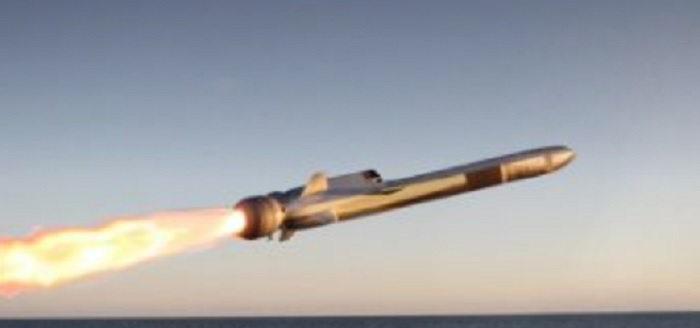
The US Department of State has cleared the potential sale of Naval Strike Missiles (NSM) anti-ship missile systems originally developed by Norwegian Kongsberg to Romania. Interestingly, they will be purchased from the US government along with the entire command system.
According to Romania’s request, approval was given for two Coastal Defense Systems (CDS) consisting of two fire control centers, four mobile rocket launchers, 10 multi-functional MIDS-JTRS communication systems with Link 16 system, Inert Handling / Loading Missile ( IHM), a logistics and training package plus an unknown number of rockets and transport vehicles alone. The maximum size of the proposed weapons is to cost USD 300 million.
The lack of information on the number of missiles that Romanians want to acquire is probably due to the fact that it is – formally – sensitive information. By analogy and the fact that the Romanians ordered a relatively modest number of four launchers, it can be assumed that it will be about 30-40 missiles. For comparison, as part of the first contract, Poland ordered its Coastal Missile Squadron (NDR) with 6 quadruple self-propelled launchers, 4 transport and launch containers each, 48 missiles in total (plus two for testing), contracted in 2008 and 2010. So they were two rockets for each launch and transport container.
As part of the second agreement from 2014, the NDR was expanded to a Naval Missile Unit with a total of two squadrons, six quadruple launchers each, and the contract also included 24 missiles in addition to the 48 previously ordered.
If the Romanians also decided to use two missiles for each transport / launch container, then it can be assumed that they want to obtain 32 NSM missiles plus 1-2 test ones. The NSM will replace the Termite surface-to-water missiles of the Soviet 4K51 Rubież system in the Romanian Navy. This will be a 1: 1 trade as Romanians now operate four launchers of this antiquated system.
Attention is drawn to the fact that the NSM system is obtained from the United States in the FMS intergovernmental procedure. This was probably due to the fact that Raytheon began working with Norwegian Kongsberg (the original system manufacturer) to offer NSM on the US market, in a ship configuration for the US Navy and shore configuration for the US Marines. So perhaps the Romanians decided to purchase the missiles along with the standard US fire control system for ground units (or found the FMS the most advantageous purchase mode for other reasons).
This is a difference to Poland, because both NDRs were obtained directly from Konsgsberg. Their purchase took into account – in contrast to the Romanian transaction – offset, they were introduced into service with elements of national detection, communication and logistic security systems (vehicles), and the comprehensive potential to support this system was created at the Military Electronic Works in Zielonka.
It should also be remembered that two missile systems based on Oskhosh chassis have already been ordered in Romania – HIMARS and Patriot, both in standard American serial configuration. Paradoxically, the purchase from FMS may lead to the unification of the chassis. In Poland, HIMARS will be on the Oskhosh chassis, while the NDR system vehicles are based in Jelcz, the Polish manufacturer will also supply Patriots with IBCS chassis acquired in the Wisła program.
